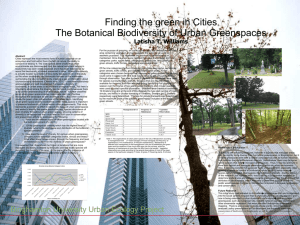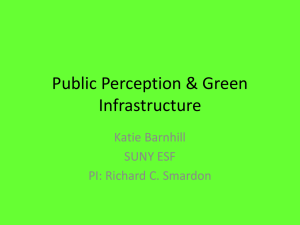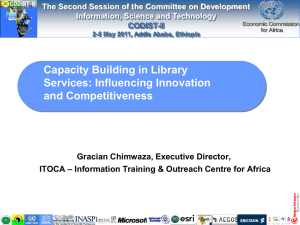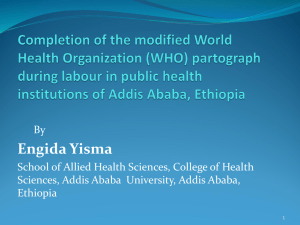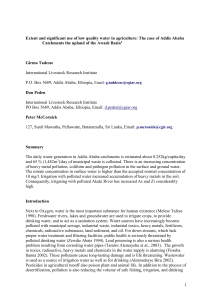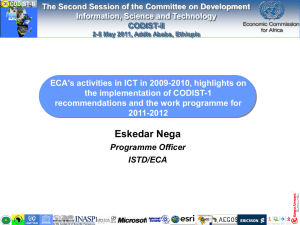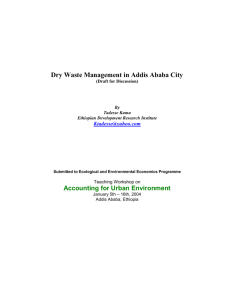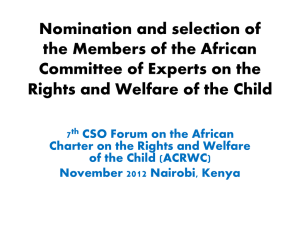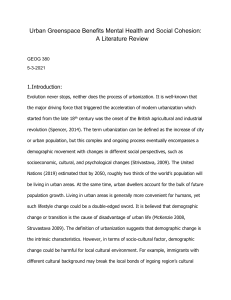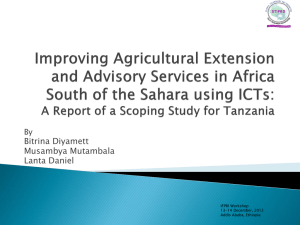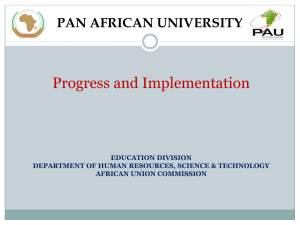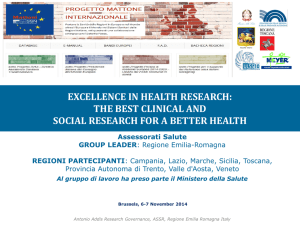Environmental Planning Ph. D Research Proposal
advertisement
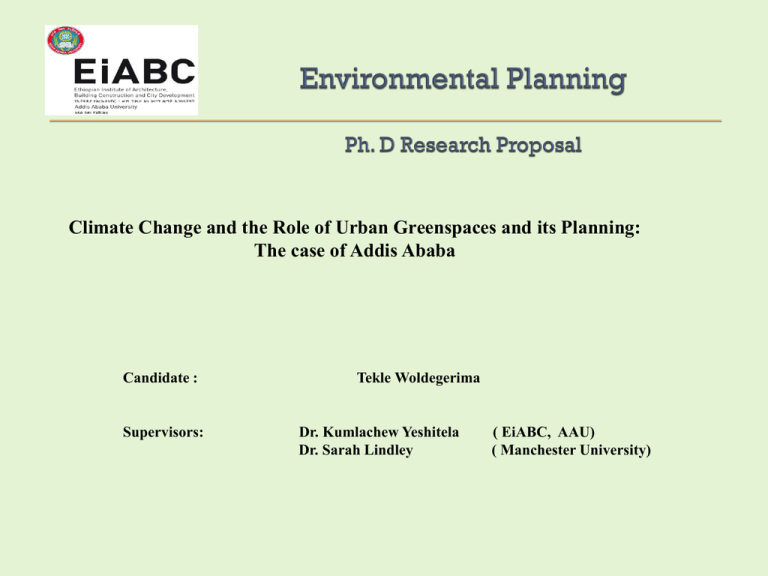
Climate Change and the Role of Urban Greenspaces and its Planning: The case of Addis Ababa Candidate : Supervisors: Tekle Woldegerima Dr. Kumlachew Yeshitela Dr. Sarah Lindley ( EiABC, AAU) ( Manchester University) STATEMENT OF THE PROBLEM The urban environment has distinctive biophysical features as compared to rural areas, its energy exchange is altered, induces an heat island, surface sealing changes in hydrological characteristics like increased surface runoff. has an impervious surface which absorb higher heat energy, ( the thermal properties of buildings, tar, asphalt, brick and concrete all with higher conductivity ) These changes are partly due to reductions in urban greenspaces both in terms of area coverage, spatial distribution and vegetation composition which in turn affects the evaporative cooling, No sufficient research to investigate these issues and develop strategies particularly in cities of developing countries and almost no information exists for Addis Ababa RESEARCH OBJECTIVES General: Investigate the role of urban greenspaces in Climate change mitigation in the urban environments and the vulnerability of urban greenspaces to anthropogenic and human induced threats SPECIFIC OBJECTIVES : Establish land cover types /characteristics of the urban environment in general and establish the temporal changes in the urban greenspaces To analyze the carbon sequestration role by a selected category of an urban greenspaces of Addis Ababa and relate to its role in mitigating climate change impacts, SPECIFIC OBJECTIVES : Analyze the microclimate modification potential of urban greenspaces in Addis Ababa and establish its urban heat island mitigating role; To analyze the major anthropogenic and none anthropogenic threats to urban greenspaces and the extent of vulnerability of the urban greenspaces of Addis Ababa, Develop methodological recommendations towards the integration of urban greenspaces in urban development planning and implementation in the Addis Ababa city; RESEARCH QUESTIONS This study will be conducted to address the following questions: What is the extent, spatial pattern and the temporal changes in the urban land cover in general and the urban greenspaces in particular in the last three decades in Addis Ababa? What is the carbon sequestration potential of in different categories of Addis Ababa City? What is the capacity of urban green spaces of Addis Ababa in modifying local temperatures? What are the major anthropogenic and none anthropogenic threats to the different categories of urban green spaces in Addis Ababa? and how vulnerable is the urban greenspace? the urban greenspaces The Study Area Addis Ababa City Location Latitude 8057’0’’ to 9004’0” N Longitude 38042’0” to 38047’0” E Average altitude 2650m asl Population: 3,000,000 Land Area: 54,000ha Greenspaces: 22 240 (41%) Which includes Forests River side forests Parks Urban agriculture Street tree Summary of Methodology by Flow Chart Spatial Data Base GIS Analysis Spatial Basis for stratified Sampling Urban Morphology Types Land Cover classes Urban Green Space classes Veg. Data Carbon Stock estimation Temp. Monitoring Compare and analyses Threats on UGS Factors analysis Analysis of individual and combined effects Change Analysis Results, Discussion, Conclusion and Recommendations The Role of Urban Greenspace in climate change and UHI Mitigation Main Threats to Urban greenspaces identified and proposed Solutions Methodologies for planning, monitoring and Management of UGS in Addis Ababa Expected Research Outcomes This research contributes to both the scientific literature advancement and urban greenspaces management. Specific expected outcomes are: Enriched literature on the urban morphology types and urban greenspaces under different climatic, socioeconomic setup and management conditions. Established facts on the contribution of Addis Ababa urban greenspaces in mitigating urban climate change impacts through carbon sequestration and modifying the micro climate temperature , Major anthropogenic and none anthropogenic threats which affect the distribution and functions of the urban greenspaces in Addis Ababa are identified, analyzed and research based solutions recommended, Methodologies for improving the planning, management and monitoring of urban greenspaces in Addis Ababa are developed and recommended , BT_LC_OP_2007 BT_LC_QB_2007 AK_LC_OP_2007 AK_LC_QB_2007 AK_QB_2007 AK_LC_QB_2007 Work Plan S.No. Period of the year Main Activity 1 June - September 2011 Research Proposal Development and submittal Consultation with Supervisors on the research Proposal Receive input from supervisors and peer group 2 Oct - December 2011 Attend Relevant Trainings ( GIS, Statistics etc) Work out the joint data collection strategy with the CLUVA research program 3 Jan - December 2012 Refining methodologies and data collection and analysis techniques Data Collection Data entry Data testing and verification 4 Jan - December 2013 Data Analysis Data processing Draft dissertation Writing 5 Jan - December 2014 Final dissertation Writing Submittal, Presentation and defending ♦ Material and methodology for Temperature Data recording comparing the cooling effect of green structures in the urban areas Attention

